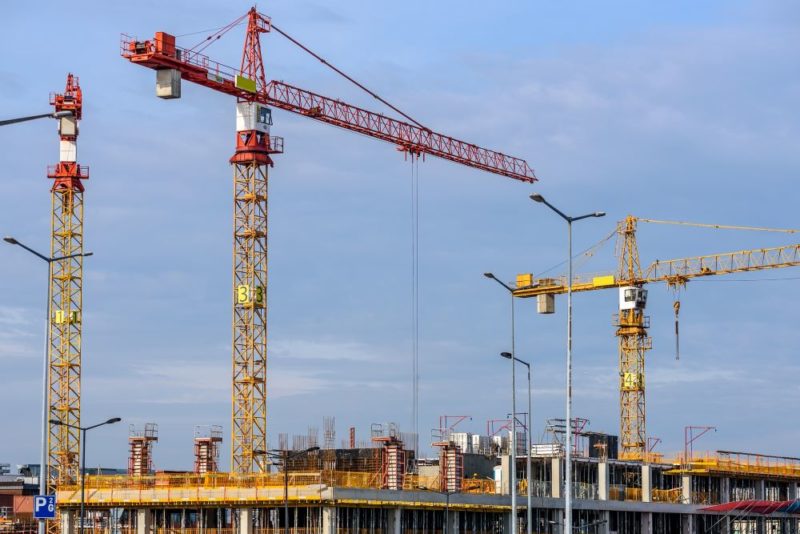The U.S. Census Bureau on Thursday reported that total U.S. construction spending was at a seasonally adjusted annual rate of approximately $1.79 trillion in October, a decrease of 0.3% from September's revised figure of $1.8 trillion.
Total spending was 9/2% higher than what the Census Bureau reported for October 2021. Spending from January through October of 2022 totaled almost $1.51 trillion, 10.8% higher than the same period in 2021.
Total nonresidential construction spending in October also dipped slightly from September by 0.3% to more than $898.4 billion, a 9.8% increase from October 2021.
The Census Bureau itemized October 2022's adjusted annual rate of spending for major private and public (combined) nonresidential project types and how they compared to August (rounded):
- Lodging - $19.1 billion (+1.3% since September 2022; +22.2% since October 2021)
- Office - $87.1 billion (+0.3%; +0.9%)
- Commercial - $117.4 billion (-0.4%; +22.4%)
- Health care - $52.4 billion (+0.4%; +7.7%)
- Educational - $98.2 billion (+0.4%; +5.2%)
- Religious - $2.8 billion (-9.9%; -1.9%)
- Public Safety - $11.7 billion (+1.6%; +10.7%)
- Amusement and recreation – $28.2 billion (+2.6%; +12.6%)
- Transportation - $56.6 billion (-0.1%; +2.3%)
- Communication - $24.9 billion (+0.6%; +0.3%)
- Power - $106.8 billion (+1.5%; -10.0%)
- Highway and street - $114.3 billion (-0.7%; +11.9%)
- Sewage and waste disposal - $32.7 billion (-1.1%; +16.6%)
- Water supply - $25.4 billion (-0.7%; +33.1%)
- Conservation and development - $9.1 billion (+0.8%; +11.5%)
- Manufacturing - $111.7 billion (-3.3%; +33.5%)
The October data, according to Anirban Basu, chief economist for the Associated Builders and Contractors, suggests that the pace of nonresidential construction activity is slowing down.
"Spending declined in a majority of nonresidential subsectors in October, and residential spending has now fallen in each of the previous four months," Basu said.
"The only bright spot: the 0.6% increase in publicly financed nonresidential construction spending," Basu said. "The infrastructure package and excess pandemic relief funds should allow the public sector to retain momentum even as the broader economy weakens."
The public sector might provide a steady supply of work, but, according to Ken Simonson, chief economist for the Associated General Contractors of America (AGC), the schedules for those projects could be negatively impacted if contractors can't find enough workers.
The AGC continues to call on federal lawmakers to let more immigrants with construction skills enter the country in order to provide some relief in the face of the skilled labor shortage, at least for the short term. However, the best resolution, the AGC said, is to increase federal funding and support for construction industry education and training programs.
"You can't be both for infrastructure and against boosting investments in preparing workers to build that infrastructure," said Stephen E. Sandherr, the AGC's CEO.
"Until federal officials narrow the five-to-one gap in federal funding for college prep versus craft career development, labor shortages will restrain the industry's ability to rebuild the economy," Sandherr said.
Source: theconstructionbroadsheet.com












